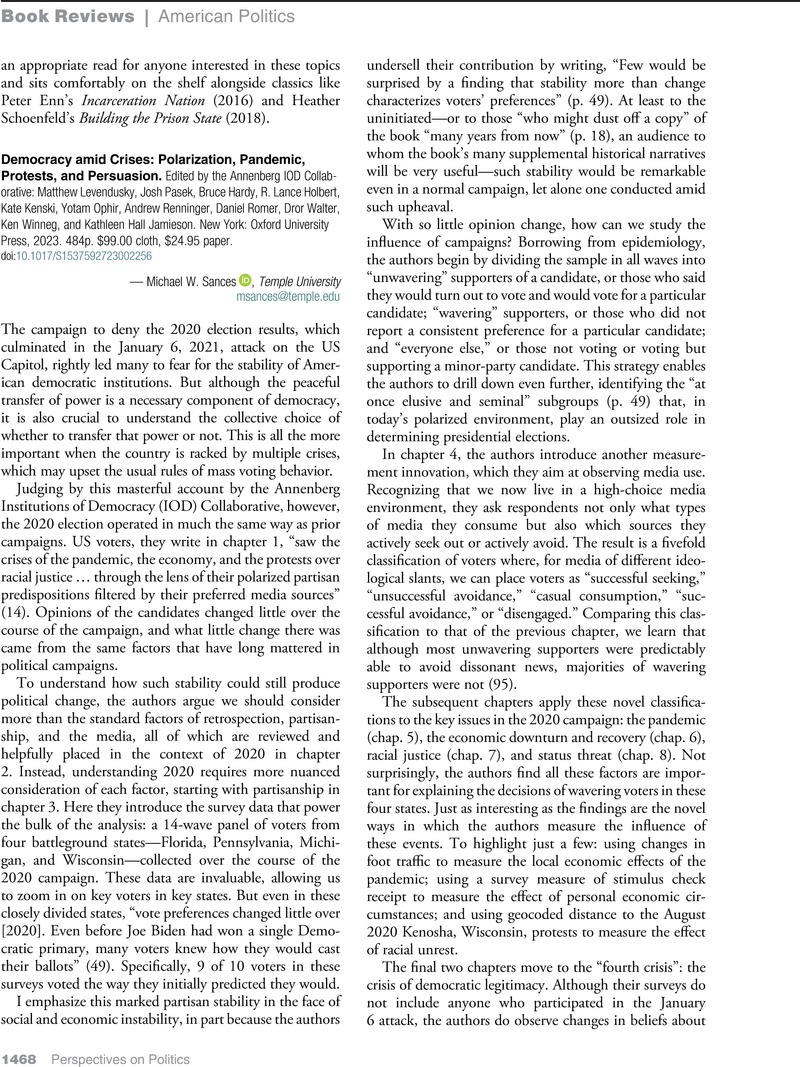No CrossRef data available.
Article contents
Democracy amid Crises: Polarization, Pandemic, Protests, and Persuasion. Edited by the Annenberg IOD Collaborative: Matthew Levendusky, Josh Pasek, Bruce Hardy, R. Lance Holbert, Kate Kenski, Yotam Ophir, Andrew Renninger, Daniel Romer, Dror Walter, Ken Winneg, and Kathleen Hall Jamieson. New York: Oxford University Press, 2023. 484p. $99.00 cloth, $24.95 paper.
Review products
Democracy amid Crises: Polarization, Pandemic, Protests, and Persuasion. Edited by the Annenberg IOD Collaborative: Matthew Levendusky, Josh Pasek, Bruce Hardy, R. Lance Holbert, Kate Kenski, Yotam Ophir, Andrew Renninger, Daniel Romer, Dror Walter, Ken Winneg, and Kathleen Hall Jamieson. New York: Oxford University Press, 2023. 484p. $99.00 cloth, $24.95 paper.
Published online by Cambridge University Press: 01 December 2023
Abstract
An abstract is not available for this content so a preview has been provided. Please use the Get access link above for information on how to access this content.

- Type
- Book Reviews: American Politics
- Information
- Perspectives on Politics , Volume 21 , Issue 4: Special Section: Methods, Ethics, Motivations: Connecting the How and Why of Political Science , December 2023 , pp. 1468 - 1469
- Copyright
- © The Author(s), 2023. Published by Cambridge University Press on behalf of the American Political Science Association


